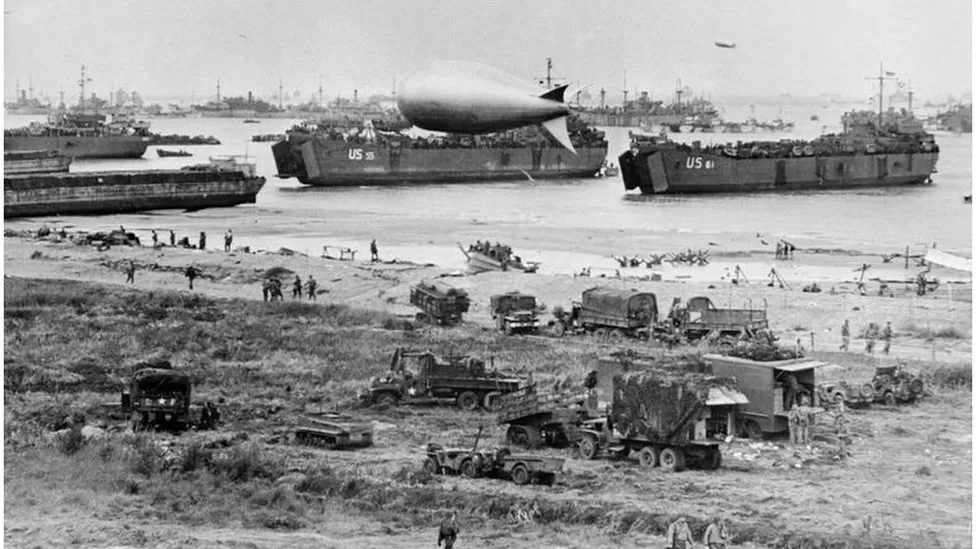Introduction
The Second Great War, perhaps of the most crushing struggle in mankind’s set of experiences, saw a pivotal second that modified its direction and formed the eventual fate of the world. This significant occasion, known as D-Day, remains as a demonstration of the unfaltering assurance and penance of incalculable people. In this article, we will investigate the meaning of D-Day and its significant effect on worldwide history.
As the Partnered powers stood up to the Pivot powers during The Second Great War, an essential activity named D-Day arose as an encouraging sign. This fastidiously arranged and executed hostile denoted a vital defining moment that in the end prompted the freedom of Europe from Nazi control. Understanding the verifiable setting, the preparation and planning included, and a definitive meaning of D-Day is vital for handle its actual size.
What is D-Day?
D-Day alludes to the day when a tactical activity starts, explicitly, the Normandy arrivals that happened on June 6, 1944, during The Second Great War. The expression “D-Day” itself is a nonexclusive military term used to signify the beginning of a critical activity. Be that as it may, the term has become inseparable from the Normandy arrivals because of their tremendous authentic significance.

Authentic Setting
To appreciate the meaning of D-Day, it is crucial to consider the verifiable setting paving the way to the activity. By 1944, The Second Great War had been seething for almost five years. The Pivot powers, drove by Germany, had involved enormous bits of Europe, spreading their harsh system and representing a grave danger to harmony and opportunity.
Arranging and Readiness
The outcome of D-Day pivoted upon careful preparation and intensive planning. Long stretches of knowledge gathering, planning, and coordination were fundamental in guaranteeing the activity’s viability. Unified powers, drove by Broad Dwight D. Eisenhower, conceived a complicated arrangement known as Activity Master.
D-Day Arrivals
The D-Day arrivals started on the sea shores of Normandy, France, and were a basic part of Activity Master. The accompanying subheadings will give a more critical gander at the Normandy sea shores, Activity Master, and the powers in question.
Normandy Sea shores
The Normandy sea shores, codenamed Utah, Omaha, Gold, Juno, and Blade, were the essential arrival zones for the Associated powers. Each ocean side confronted interesting difficulties, and the troopers needed to defeat weighty protection from lay out a traction.
Activity Master
Activity Master was the codename for the Partnered intrusion of Normandy. The activity expected to get a foothold in France, lay out a stock line, and send off a full-scale hostile against German-involved Europe.
United Powers
The outcome of D-Day depended on the cooperative endeavors of different Unified powers. Troops from the US, Joined Realm, Canada, and different countries battled next to each other, showing fantastic boldness and flexibility.

Meaning of D-Day
The meaning of D-Day reaches out a long ways past its nearby military effect. This part investigates the multi-layered significance of the activity.
Defining moment in The Second Great War
D-Day denoted a defining moment in The Second Great War. The fruitful Partnered arrivals managed a serious disaster for the Pivot powers, prompting a progression of occasions that eventually prompted their loss. It moved the force for the Partners, imparting trust in the hearts of millions.
Freedom of Europe
D-Day made ready for the freedom of Europe. The foundation of a firm traction in Normandy permitted the Partnered powers to send off a monstrous hostile, freeing France and other European countries from Nazi control. It stopped the domineering rule that had overwhelmed the mainland.
Influence on Worldwide History
The effect of D-Day on worldwide history couldn’t possibly be more significant. It reshaped the international scene, added to the downfall of pilgrim realms, and set up for the Virus War. The activity showed the force of aggregate activity and filled in as a strong image of obstruction against oppression.

Celebration and Recognition
D-Day holds tremendous importance concerning recognition and recognition. The penances made by troopers and regular citizens the same are respected through different functions, remembrances, and exhibition halls. These act as tokens of the dauntlessness and assurance displayed right then and there.
Conclusion
D-Day remains as a permanent section in mankind’s set of experiences. It addresses the victory of fortitude, solidarity, and strength despite overpowering chances. The meaning of D-Day stretches out past military system and strategies; it includes the qualities and beliefs that structure the groundwork of an equitable and liberated world.
FAQs
Q. Was D-Day an unexpected assault?
D-Day was not an unexpected assault. The Unified powers had painstakingly arranged and ready for the Normandy arrivals, guaranteeing they had the most obvious opportunity with regards to progress.
Q. What number of troopers were engaged with the D-Day arrivals?
Around 156,000 fighters from different Unified countries participated in the D-Day arrivals.
Q. What was the setback rate on D-Day?
The specific setback figures are hard to decide, however it is assessed that a great many warriors lost their lives on D-Day, both United and German powers.
Q. For what reason is D-Day called D-Day?
The expression “D-Day” is a conventional military term used to assign the beginning of a huge activity. With regards to the Normandy arrivals, it has become inseparable from the occasions of June 6, 1944.
Q. What was the drawn out effect of D-Day?
The drawn out effect of D-Day was the freedom of Europe from Nazi control, the downfall of pioneer realms, and the reshaping of the worldwide international scene.

